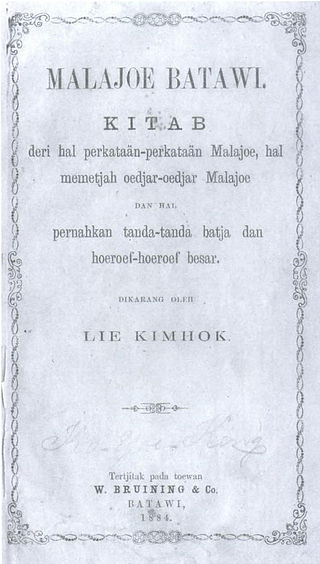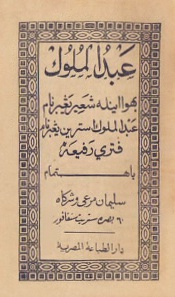Related Research Articles
Chew Choon Eng is a Malaysian former badminton player. He was a gold medalists at the 2002 Commonwealth Games in the men's doubles event, also at the 1999 and 2001 SEA Games in the mixed doubles and men's team events respectively. Chew also won the bronze medal at the World Championships in 2001. He reached a career high as world number 1 in the men's doubles on 11 April 2002.

Flandy Limpele is an Indonesian former badminton player and coach. He competed in four Summer Olympic Games: Atlanta 1996, Sydney 2000, Athens 2004, and Beijing 2008.

Southern Praying Mantis is a Chinese martial art originating with the Hakka people. It is most closely associated with Hakka-origin styles such as Southern Dragon Kung Fu and Bak Mei.
Simplified Wade, abbreviated SW, is a modification of the Wade–Giles romanization system for writing Standard Mandarin Chinese. It was devised by the Swedish linguist Olov Bertil Anderson (1920–1993), who first published the system in 1969. Simplified Wade uses tonal spelling: in other words it modifies the letters in a syllable in order to indicate tone differences. It is one of only two Mandarin romanization systems that indicate tones in such a way. All other systems use diacritics or numbers to indicate tone.

Yokohama Sōei Junior College is a private junior college in Midori-ku, Yokohama, Kanagawa Prefecture, Japan, established in 1989.
Eevi Huttunen, was a speed skater from Finland. She was born in Karttula.
Iris Hellin Sihvonen was a Finnish speed skater. She represented Finland at the Olympic Winter Games of 1960 in Squaw Valley, Placer County, California and made seven consecutive appearances at the World Allround Speed Skating Championships for Women between 1955 and 1961. She became Finnish champion in 1956 and 1961 and skated at first with Valkeakosken Haka and later with Valkeakosken Koskenpojat.

Sair Tjerita Siti Akbari is an 1884 Malay-language syair (poem) by Lie Kim Hok. Adapted indirectly from the Sjair Abdoel Moeloek, it tells of a woman who passes as a man to free her husband from the Sultan of Hindustan, who had captured him in an assault on their kingdom.

Malajoe Batawi: Kitab deri hal Perkataan-Perkataan Malajoe, Hal Memetjah Oedjar-Oedjar Malajoe dan Hal Pernahkan Tanda-Tanda Batja dan Hoeroef-Hoeroef Besar is a grammar of the Malay language as spoken in Batavia written by Lie Kim Hok. The 116-page book, first published in 1884, saw two printings and has been described as the "most remarkable achievement of Chinese Malay writing".

Tio Ie Soei was a peranakan Chinese writer and journalist active in the Dutch East Indies and Indonesia. Born in the capital at Batavia, Tio entered journalism while still a teenager. By 1911 he had begun writing fiction, publishing Sie Po Giok – his first novel – that year. Over the next 50 years Tio wrote extensively in several newspapers and magazines, serving as an editor for some. He also wrote several novels and biographies, including ones on Tan Sie Tat and Lie Kim Hok.

Sjair Abdoel Moeloek is an 1847 syair (poem) credited variously to Raja Ali Haji or his sister Saleha. It tells of a woman who passes as a man to free her husband from the Sultan of Hindustan, who had captured him in an assault on their kingdom. The book, with its theme of gender disguise common to contemporary Javanese and Malay literature, has been read as repositioning the hierarchy of men and women as well as the nobility and servants.
Tjerita Sie Po Giok, atawa Peroentoengannja Satoe Anak Piatoe is a 1911 children's novel from the Dutch East Indies written by Tio Ie Soei in vernacular Malay. It tells the story of Sie Po Giok, a young orphan who faces several challenges while living with his uncle in Batavia. The story, which has been called the only work of children's literature produced by Chinese Malay writers, has been read as promoting traditional gender roles and questioning Chinese identity.

Tjhit Liap Seng, also known as Bintang Toedjoeh in Malay, is an 1886 novel by Lie Kim Hok. It is considered the first Chinese Malay novel.

Lauw Giok Lan was a Chinese Indonesian journalist and writer. He was one of the founders of the newspaper Sin Po.

Tio Tek Ho, 4th Majoor der Chinezen was an ethnic Chinese bureaucrat in the Dutch East Indies who served as the fourth and penultimate Majoor der Chinezen or Chinese headman of Batavia, now Jakarta, capital of Indonesia. This was the most senior position in the Chinese officership, which constituted the Chinese arm of the civil bureaucracy in the Dutch East Indies. As Majoor, Tio was also the ex officio Chairman of the Chinese Council of Batavia, the city's highest Chinese government body.
Tan Eng Yoon was a Singaporean sprinter. He competed in the men's 100 metres at the 1956 Summer Olympics. In the triple jump event at the 1959 Southeast Asian Peninsular Games, he set a Singaporean record that lasted for 32 years. He later became the coach of the national team, and was the first President of the Singapore Olympians Association.

Tan Tjoen Tiat, 2nd Majoor der Chinezen was a Chinese-Indonesian bureaucrat who served as the second Majoor der Chinezen, or Chinese headman, of Batavia, now Jakarta, capital of Indonesia. This was the most senior Chinese position in the colonial civil bureaucracy of the Dutch East Indies. As Majoor, Tan was also the Chairman of the Chinese Council of Batavia, the city's highest Chinese government body.
The Ngo Ho TjiangKongsi, sometimes spelled Ngo Houw Tjiang, was a powerful consortium that dominated the opium pacht or tax farm of the Residency of Batavia, Dutch East Indies in the early to mid-nineteenth century. The pacht was an outsourced tax operation, collecting customs, excise and indirect duties on behalf of the Dutch colonial government.
Lie On Moy (1884–1951) was a Peranakan Chinese journalist, writer and translator in the Dutch East Indies. She is thought to have been one of the first Peranakan women journalists and published writers in the Indies.
References
- ↑ "Lie Eng Soei". Olympedia. Retrieved 6 June 2020.